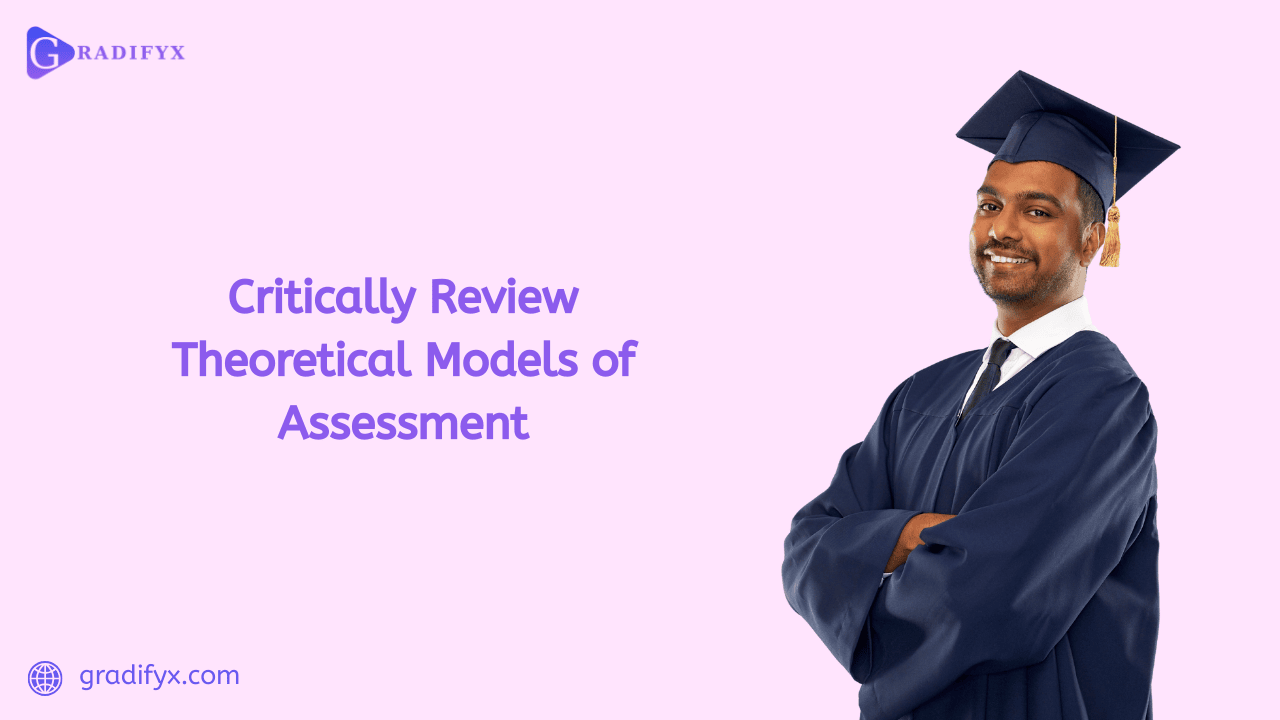Home / Nemo Me Impune Lacessit’: The Drive for Justice in “The Cask of...
Read MoreCritically review theoretical models of assessment

Critically review theoretical models of assessment
The assessment process serves fundamental purposes in education for professional development. The assessment tool enables organizations to measure learning and track performance development thus positioning itself as an essential element for training and teaching processes. Several experts created multiple theoretical assessment models throughout time for establishing reliable and useful assessment systems.
These models supply guidelines for producing efficient assessment designs alongside their application procedures. In this content, we will “critically review theoretical models of assessment,” looking at their strengths, weaknesses, and how they apply in real-life settings. This information matters for people who conduct ability and knowledge assessments in any capacity including educational staff and training personnel.
Different Models, Different Purposes
Theoretical assessment models have multiple varieties that exist for using in distinctive educational situations. Some focus on testing knowledge, while others look at skills, behavior, or attitudes. Under the Norm-Referenced Model different students are compared to each other whereas the Criterion-Referenced Model establishes marked benchmarks for assessment purposes. The Diagnostic Model functions for discovering knowledge gaps whereas the Formative and Summative assessment tools enable measurement of continuous learning development. When we “critically review theoretical models of assessment,” it becomes clear that no single model fits all situations.
Every assessment method comes with both strong points and boundaries for use. The competition caused by norm-referenced assessments could be damaging but using formative assessments needs added time and resources. Educators become better able to select or combine assessment models when they understand their different characteristics. The background of the learner together with their goals and educational situation should influence application of any assessment model. Analysis of assessment theories creates opportunities to enhance assessment quality which generates improved learning results.
Peacocks and Pomegranates: Decoding Hera’s Iconic Symbols in
Home / Peacocks and Pomegranates: Decoding Hera’s Iconic Symbols in Greek Mythology Peacocks and...
Read MoreUnraveling the Layers: An Analysis of ‘Mom’s Spaghetti’
Home / Unraveling the Layers: An Analysis of ‘Mom’s Spaghetti’ Lyrics Unraveling the Layers:...
Read MoreUnderstanding the Depth in “Colors of the Wind”
Home / Understanding the Depth in Colors of the Wind Understanding the Depth in...
Read MoreFilm Analysis: Delving into the Depths of the
Home / Film Analysis: Delving into the Depths of the Entire ‘Bee Movie’ Script...
Read MoreUnderstanding the Dawes Act: Definition and Impact on
Home / Understanding the Dawes Act: Definition and Impact on Native American Lands Understanding...
Read MoreCatherine Roerva: A Complex Figure in the Narrative
Home / Catherine Roerva: A Complex Figure in the Narrative of Child Abuse Catherine...
Read MoreThe Story Behind the Face on the $50
Home / The Story Behind the Face on the $50 Bill The Story Behind...
Read MoreGet Your Assignment Now!








